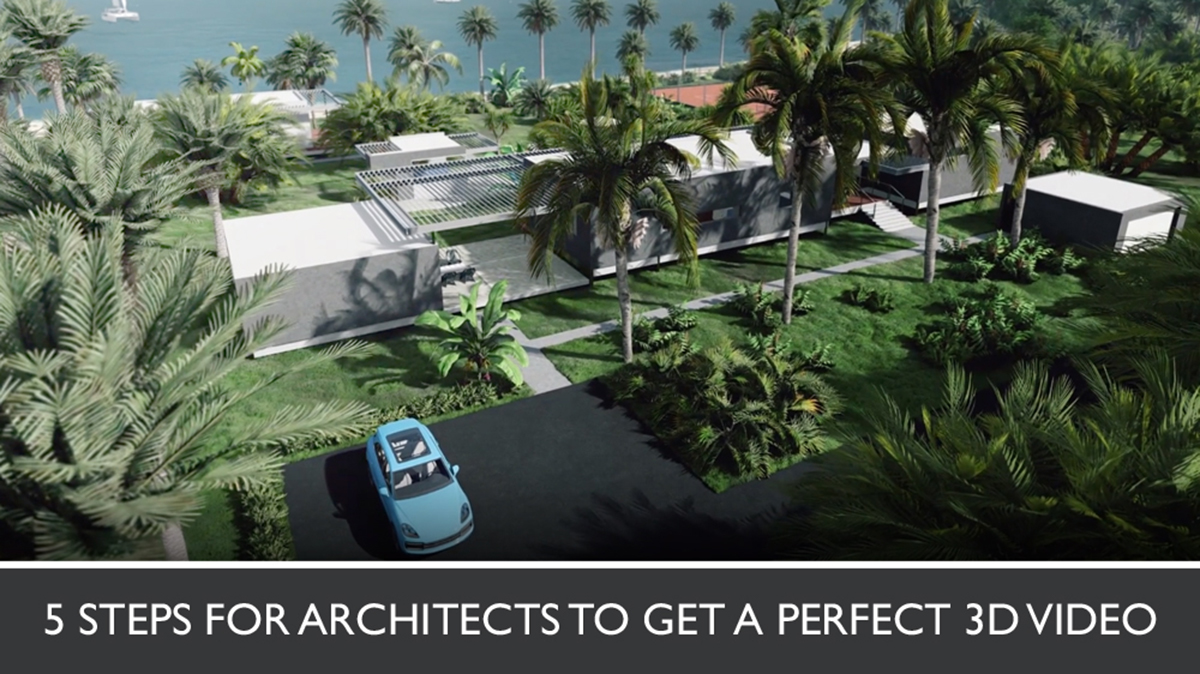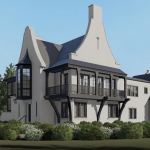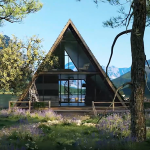3D animation rendering services allow Architects to present their clients the expected results in photoreal quality and movement before construction begins. That is why CG video compares favorably with all the other means of presentation — such as sketches and physical models. Unlike these materials, 3D animation rendering displays the project with realism and accuracy and gives viewers a lifelike visual experience. The digital video demonstrates all the features of an architectural design, makes it possible to practically walk through the rooms, look at the building from above, and see how everything will look and work in the future house. This way, architecture presentation becomes really impressive and transparent.
But despite all the above-mentioned advantages, not all Architects take benefit from 3D animation rendering services. They don’t know where to start, what the process of creating a 3D demonstration includes, and what is required to get the best results. To clarify these points, we described in detail 5 steps to take to get top-notch 3D videos and amaze clients at presentations!
#1. Finding a Reliable 3D Animation Services Company
The first step for getting high-quality 3D rendering services is selecting a CGI provider. To make the right choice, an Architect should find the most competent and reliable company.
To assess the expertise of a CGI services company, one should check a firm’s portfolio. Does it contain the animation rendering of the relevant project types? After all, it’s the only experience that matters.
Also, it is wise to pay attention to the quality of 3D animations in the portfolio. A good 3D demonstration should be photorealistic, have an interesting scenario, and convey a certain atmosphere.
And how to understand if a 3D services provider is reliable? It helps to learn about the company’s guarantees and project data security standards. High-end 3D visualization companies take care to provide their clients with timely results and protect their confidential information. For instance, our CGI company offers a timeliness guarantee, so an Architect can be sure that he will receive his presentation materials within the deadline. Also, our 3D animation rendering services firm signs non-disclosure agreements with our clients so that they can be sure that all their project details are safe.
#2. Building a Brief for a 3D Animation Project
When a 3D rendering services provider is chosen, it’s time to make up a technical specification, also called brief. A brief is needed for 3D Artists to clearly understand the expected result, establish the timeframe and evaluate the cost. The more detailed a brief is, the fewer amendments will be needed during the working process. Which is great because corrections and alterations would require that the Architect spend more time and money. Here’s what a good brief should specify:
- the function of the building: residential real estate or commercial construction;
- type of 3D animation: exterior, interior, or mixed;
- drawings of building and layouts of surrounding territory;
- list of materials to be used for construction;
- style and mood references, namely — videos and pictures similar to what the author of the architectural design wants to see in the final 3D animation rendering;
- information about the landscape in the construction area: a city or woods, mountains, etc;
- time of the day and season to be shown in the 3D animation;
- a music file or references for a soundtrack;
- 3D animation length;
- supposed camera tracing.
#3. Previewing the 3D Model and Approving the Scenario
When 3D animation rendering services are ordered, the digital video design begins. The process starts with the 3D modeling of the building. At this stage, 3D Artists make a gray 3D model of the house based on the drawings from the brief and then show it to the author of the project. The Architect should comment on the digital model and ask the specialists of the architectural animation studio for adjustments if needed.
Also, at this phase, the scenario of the future 3D animation is approved. The Architect discusses with the specialists of the CGI services studio what is going to be shown first, what happens next, and what is planned to be at the end of a future 3D movie. Together, they establish the sequence of all scenes for the final 3D demonstration.
After that, the 3D Animation Artists prepare a rough cut of the future video that shows the main angles and camera movements. Using the Grab Viewpoint option in the 3ds Max program, 3D Artists show this cut to the author of the architectural project on the screen via Skype. This way, it becomes possible to ask for corrections of the scenario before moving to the next step of work.
#4. Checking Textures and Lighting
Once the 3D model and scenario are approved, it’s time to ensure that the future video looks photorealistic. To achieve that, 3D Animation Artists set textures and lighting for the renderings that CGI animation will consist of.
So, the specialists carefully select textures for all exterior and interior surfaces that will be shown in a 3D demonstration. These surfaces include the building’s facade and roof, as well as the floor, ceiling, furniture, and decor for interior design, and so on. Also, to achieve the photorealistic effect, 3D Artists masterfully set natural and artificial lighting in the renderings. As a result, they create still photoreal images which are actually “shots” from the future 3D demonstration.
Then, the specialists of 3D animation rendering services studio submit these photoreal renders for approval. It is essential to examine textures and lighting thoroughly on this stage and suggest any changes if necessary. For it will be impossible to make serious amendments to the project afterward without major efforts and lots of time — which will mean extra payment. That is because the textures and lighting settings will be applied to hundreds of still renders that make up a 3D animation. So, if the Architect decides that he wants to change the textures after the 3D video is ready, that will mean re-creating these renders all over again.
#5. Fine-tuning the Atmosphere in 3D Animation
Fostering atmosphere is the icing on the cake and the ending point in the process of 3D animation rendering. This phase is called post-production and means adding special effects to a 3D demonstration to create a unique ambiance. This is when the 3D Animation Artists add weather effects — such as fog, rain or snow. As well, they correct visual properties of the 3D video — colors, hues, sharpness, and so on, and add or change music, subtitles, and voiceovers in the footage.
When the post-production process is complete, the Architect should check the results to see if he likes the atmosphere in the 3D video. If it is different from what he had in mind, he can ask the provider of 3D animation rendering services to refine the atmosphere – until it’s perfect.
Getting a high-quality 3D demonstration is easy if the Architect follows these 5 simple steps. First of all, he should find a trustworthy provider of 3D visualization services and build a detailed brief. Then, he needs to approve a 3D model and scenario, and check still renders with textures and lighting. And finally, the author of the architectural design should watch the final result for the atmosphere and decide if it needs refining.
Want to win clients’ hearts at architecture presentations? Contact our 3D animation company for high-quality 3D rendering services that will help you to achieve just that.





Insightful, thank you
Thanks! I could use this info. Wish I saw it earlier!
WOW just what I was looking for. Came here by searching for architecture portfolio